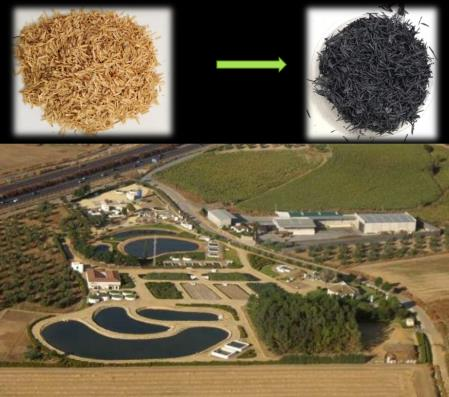The CSIC, in collaboration with the Technische Universität Berlin, has developed a manufacturing
process for obtaining, from rice husk, activated carbon filters for the removal of emerging organic
pollutants in waters. The process, which additionally enables the recovery of an agricultural waste with
null economic interest, generates filters with greater efficiency than that of the commercial activated
carbons.
Industrial partners are sought to collaborate through a patent licence agreement.
An offer for Patent Licensing
Description of the technology
The developed procedure enables the obtaining, in a sustainable way, of an activated carbon with great capacity in water purification processes in areas as diverse as purification, mining, agriculture, food industry, wastewater treatment and a wide etcetera.
In recent years, one of the most demanded applications of activated carbon is, due to its great adsorption power, its use in purification processes, participating in the elimination of organic pollutants present in waters intended for human consumption.
The activated carbon synthesis process involves two well-defined stages: i) carbonization / pyrolysis of the precursor and ii) physical or chemical activation of the carbon. Chemical activation is the most common way in today's commercial activated carbons. Even being effective, it has two major drawbacks. On the one hand, highly reactive noxious gases are released as a result of the reactions taking place and evaporation of oxidizing agents at high temperatures; and on the other hand, the presence of any trace of the activating chemical substance should be verified at the end of the process.
The developed procedure, based on an initial stage of rice husk pyrolysis in the absence of oxygen and a second stage of physical activation, enables to obtain, overcoming the disadvantages mentioned above by not using chemical oxidizing agents, activated carbon filters in the form granule with a large water purification capacity in a sustainable way.
Main innovations and advantages
· The rice husk has advantages over other agricultural residues such asits particle size, its pH, its high water retention capacity and its highcontent of silica.
· The developed process avoids the needs of using chemical oxidizingagents during the activation as used in the production of most of thecommercial activated carbons (GAC). Therefore, the operationalprocedure is safer and environmentally friendly due to lack ofgeneration of noxious oxidant gases.
· The new activated carbon (SAC) produced poses a larger amount ofsorption sites of organic contaminants per weight unit than commercialactivated carbons (GAC) enabling a higher resolution in the removal oforganic pollutants (neutral, anionic and cationic) than GACs.
· The material developed especially affects the so-called emergingpollutants, which, even in very low concentrations, can be harmful tohealth and environment.






